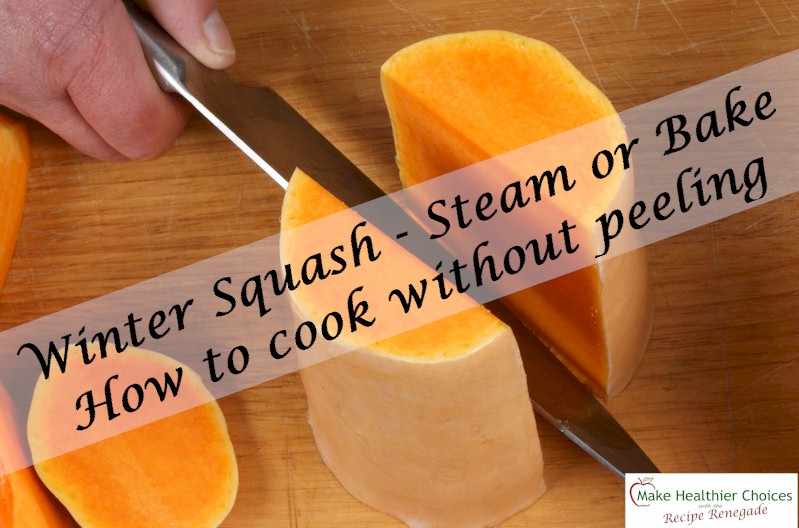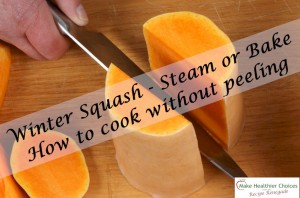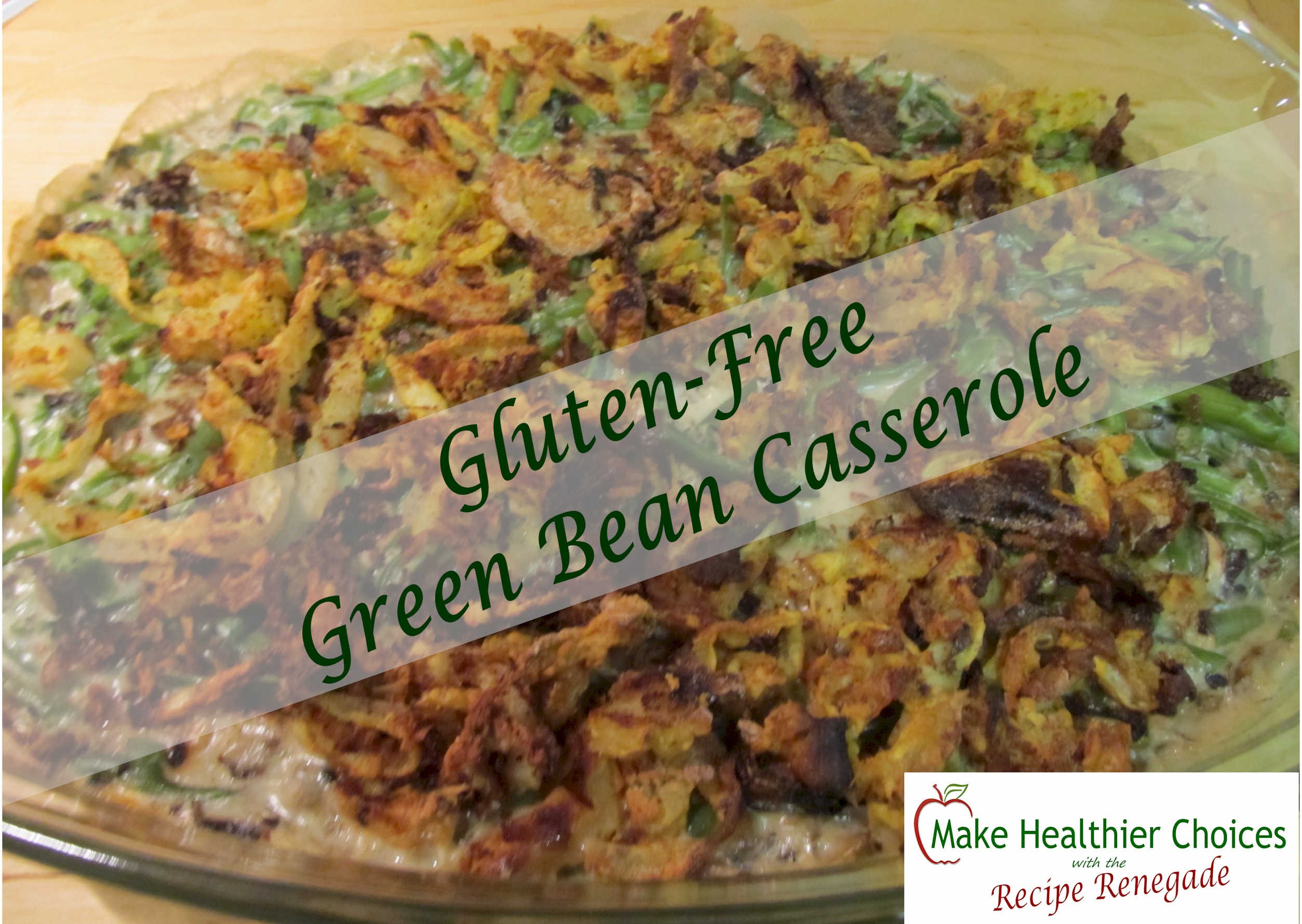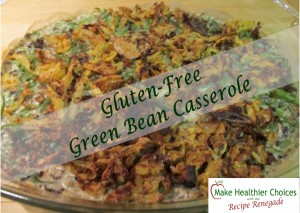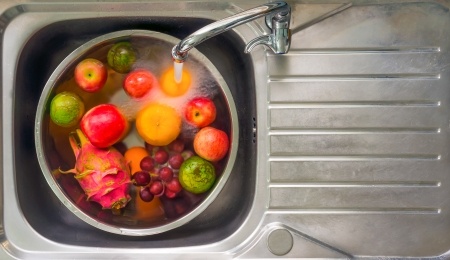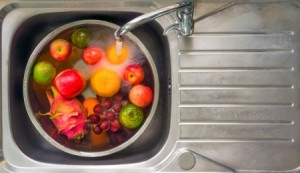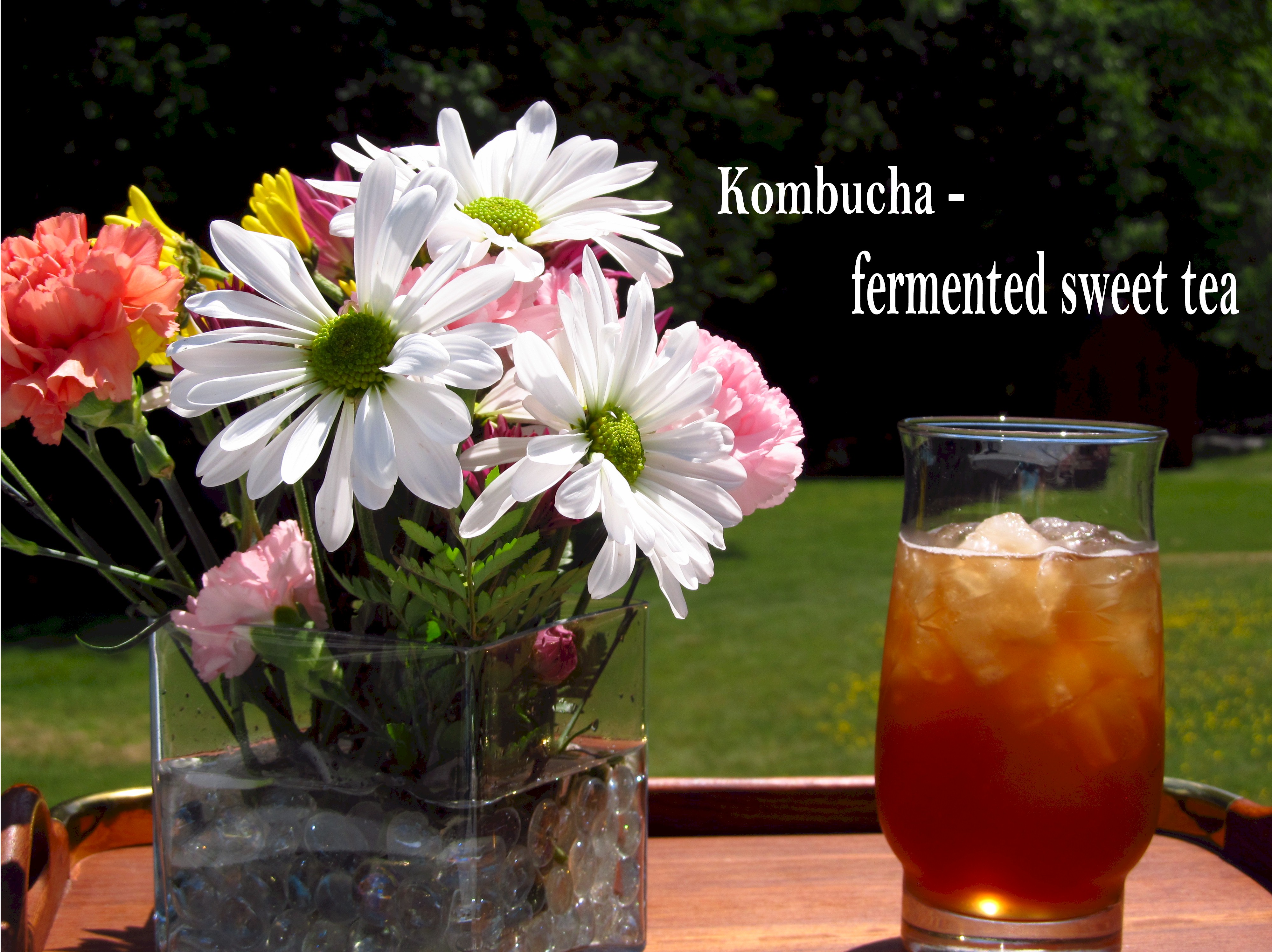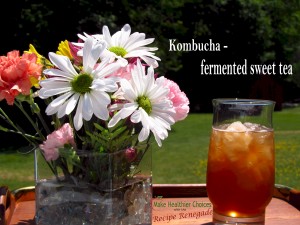I can’t count how many times peeled winter squash before cooking. It seems once I invested in an expensive, sharp vegetable peeler, I then realized peeling wasn’t necessary. Go figure. I like to cook several at a time and freeze in vacuum-seal bags. I make my own bags by using these rolls:
- Butternut (or other winter squash) Squash
- 2 Tablespoons Melted Butter
- 2 Tablespoons Maple Syrup (+-)
- ¼ Teaspoon Himalayan Salt (+/-)
- Carefully and with a sharp chef knife, cut off both ends of squash.
- Stand squash up on one end.
- Cut in half (lengthwise).
- Seeds and pulp can be removed now or after cooking.
- Put on cutting board, cut side down, and cut into a couple smaller pieces.
- Put into steamer basket and steam for about 35 minutes or until squash is soft.
- Remove from steamer and place on cutting board to cool.
- If seeds were not removed before cooking, carefully remove them.
- Once squash has cooled (about ½ hour depending on thickness of squash), scoop squash out into a mixing bowl.
- Add butter, salt, and maple syrup.
- Use electric mixer to blend.
- Re-heat before serving.
BAKED:
- 1 Butternut (or other winter squash) Squash
- ¾ Cup Water
- 2 Tablespoons Melted Butter
- 2 Tablespoons Maple Syrup (+-)
- ¼ Teaspoon Himalayan Salt (+/-)
- Carefully and with a sharp chef knife, cut off both ends of squash.
- Stand squash up on one end.
- Cut in half (lengthwise).
- Seeds and pulp can be removed now or after cooking.
- Place on jelly pan, skin side up.
- Add water to pan.
- Bake at 400° F for about 35 minutes or until squash is soft.
- Remove and place on cutting board or cooling rack to cool.
- If seeds were not removed before cooking, carefully remove them.
- Once squash has cooled (about ½ hour depending on thickness of squash), scoop squash out into a mixing bowl.
- Add butter, salt, and maple syrup.
- Use electric mixer to blend.
- Re-heat before serving.
